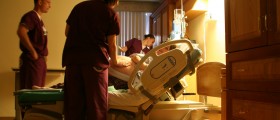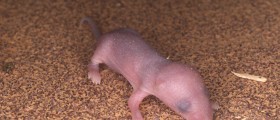
It is estimated that mosaic Down syndrome accounts for approximately 2 to 4% of all cases of Down syndrome. In order for a person to fully understand the term mosaicism it is essential to understand the concept of cells. Each and every part of our body, including all the tissues, organs and organ systems is made up of cells. Even though there is a variety of cells (skin cells, muscle cells, kidney cells etc) they all originate from a singe cell, the fertilized egg. The fertilized egg, also known as zygote, starts as a single cell and it duplicates and divides into two cells. What follows is further division of the mentioned cells and creation of new cells. Division of cells continues until all the body parts are made and the very process of cellular division lasts even after the baby is born.
In case of trisomy (which is the case of Down syndrome) each cell has an extra 21 chromosome. This eventually causes the presence of the extra chromosome in all the cells in the body. The error occurs in the egg or sperm cell which fuse and create the zygote. But, in case of mosaic trisomy 21, the error develops after fertilization and during early cell division. As a result in people suffering from mosaic Down syndrome have two cell lines, the one with the normal number of chromosomes and the other which features with an extra number 21 chromosome. This is why in mosaic Down syndrome not all the cells contain an extra chromosome.
Diagnosing Mosaic Down Syndrome
Mosaic Down syndrome can be confirmed by genetic testing of the baby's blood. 20-25 cells are routinely examined. If some of the cells contain the extra 21 chromosome and some do not, the diagnosis of mosaicism can be confirmed.
Mosaicism may affect only one cell line. For example, some blood cells have an extra 21 chromosome while others have normal number of chromosomes. On the other hand, mosaicism may occur across cell lines. Namely, skin cells may have trisomy 21 and other cell lines do not have to be affected at all. This is why in case mosaicism is suspected and not confirmed through the blood test there is another option for other cell types to be examined. The most commonly tested cells are skin and bone marrow cells.
Even though the percentage of mosaicism is generally determined from the blood cells, the actual percentage of mosaicism may be different in other cell lines.
Level of Mosaicism and Presentation of Down Syndrome
People suffering from mosaic Down syndrome may or may not have milder symptoms and signs comparing to full trisomy 21. The actual effects of mosaicism are wide and variable. This is why people suffering from mosaic Down syndrome are actually treated the same as children suffering from full trisomy 21. Only after certain period of time the doctors can tell whether the disabilities in a child with mosaic Down syndrome are milder than in children suffering from typical trisomy 21.

















Your thoughts on this
Loading...